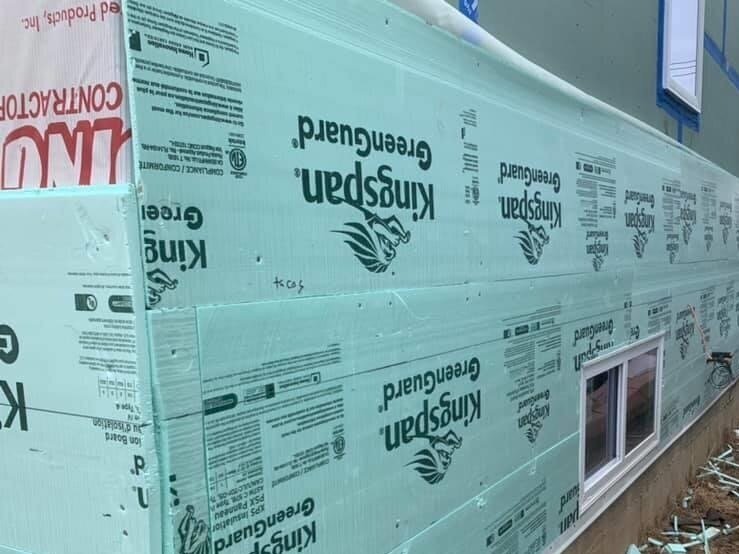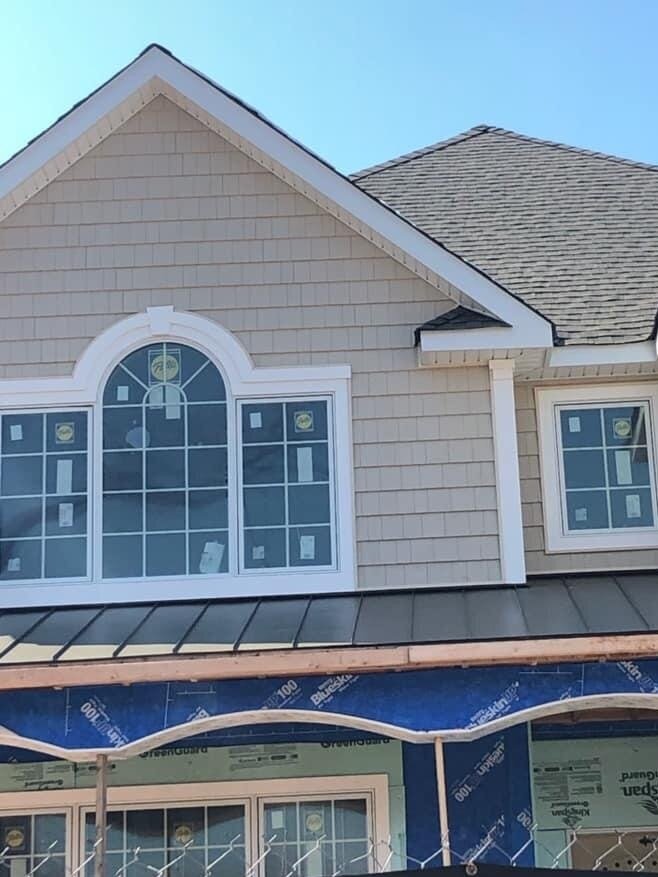A siding replacement presents a rare opportunity for a cost-effective home insulation upgrade.
Have you ever had to deal with a sweltering upstairs bedroom that you couldn’t cool between May and September? Or a bathroom that was cold year-round? And just for good measure, your utility bills are sky-high?
One of the best ways to improve the comfort of your home is by installing exterior thermal insulation beneath your siding. The Department of Energy (DoE) and the American Society of Heating and Air-Conditioning Engineers (ASHAE) consider retrofitting a home with exterior wall insulation a sound approach to improving comfort and energy efficiency. (Retrofitting is when you add to an existing home for the purpose of improving energy efficiency.) Experts note that this approach is cost-effective if you’re already replacing your siding.
Nobody loves paying utility bills, which is why one of the most common selling points of insulation upgrades is energy savings.
But we don’t see that as the most important benefit.
The most important benefits of adding insulation to exterior walls are quality of life-related. So today we’re focusing on health and comfort, rather than the financials (although they can also be enticing).
Here’s what you need to know to fully understand the costs and benefits of siding and insulation upgrades.
Health and happiness
Everyone deserves to walk into a comfortable home at the end of the day, and the quality of your insulation is one of the key things that determines whether you do.
Several organizations that study how building design and construction impacts people’s health, including the World Health Organization (WHO), have a lot to say about this.
WHO has extensively studied the relationship between indoor temperatures, insulation, and occupant health. They report that improved household insulation can reduce the risk and severity of a variety of chronic illnesses, including:
-
respiratory and cardiovascular illness
-
depression
-
asthma
-
infections
In fact, proper insulation is a top recommendation in the WHO’s Housing and Health Guidelines.
There’s a reasonable possibility that you’ll be much healthier five years from now if you invest in better household insulation. But what’s virtually certain is that you’ll be more comfortable starting the day the work is done.
The financial payoff (in terms of savings on utility bills) might take months or years, but the quality of life payoff is immediate.
Warmer winters, cooler summers
Temperature swings and inconsistency from room to room are very frustrating to deal with as a homeowner. Your bedroom, living room, and kitchen should be reasonably warm in the winter and cool in the summer. And ideally, the temperature should be consistent throughout the house.
Part of the reason that is often not the case is thermal bridging. Thermal bridging is undesired heat gain or heat loss through your home’s walls, roof, foundation and ceilings. This typically occurs in places where there are breaks in your insulation. That would be studs, joists, and rafters.
Tired of feeling like your living room is a swamp? Frustrated by drab siding? Need a drafty window replaced? Contact B&B Siding today for a quote.
You pay tomorrow what we quote you today—no surprises.
Whatever the season, when heat flows through your walls, it’s moving in a direction you don’t want.
“Insulation placed between joists, rafters, and studs does not retard heat flow through those joists or studs,” states the Department of Energy Insulation Fact Sheet. So even if you have very thick insulation between the studs, you’ll have a lot of heat moving through them. There might be robust insulation, but it’s discontinuous. Discontinuous insulation isn’t completely ineffectual, but it’s far from ideal.
Unfortunately, this is the standard for homebuilding in many places.
Think of it this way: If you have a down jacket with a tennis ball-sized hole in it, the best way to improve the comfort of that jacket isn’t to stuff more down into it. It’s to patch the hole. That’s essentially what adding insulation beneath your siding does. The industry term is continuous insulation.
Continuous insulation blocks heat transfer (a.k.a., thermal bridging) by covering up the studs. It can have a huge impact on household comfort and utility bills.
Eliminating drafts: Air sealing
A proper siding and insulation upgrade will reduce drafts as well as condensation within the walls of your home. Walls aren’t supposed to “breathe,” but nor should they trap moisture. Vapor barriers and caulking beneath your siding eliminate drafts, but if they’re not done right, they can trap moisture. This creates an environment where mold is likely to form.
“Weatherization reduces heat loss via air leaks through walls and ceilings, but it can also reduce the necessary air exchange of the building,” the World Health Organization states in its Housing and Health Guidelines.
Fortunately, there are vapor barriers that prevent drafts and keep moisture out while still allowing moisture to escape. This prevents mildew and mold formation inside the wall.
For the best results, you’ll want to work with an experienced siding contractor who understands how to pull this off. And while airtight walls and continuous insulation are hugely beneficial, they occasionally require additional ventilation.
Bundle up
If your siding is showing signs of age, replacing it is a clear way to improve your home’s curb appeal. Just don’t neglect the opportunity to improve your comfort and energy efficiency at the same time. Ask any siding contractor you’re considering about the feasibility of adding exterior insulation beneath the siding. Ask about mold prevention, air sealing and ventilation. There’s no one size fits all approach for home upgrades, but whatever their answer, they should be able to justify it.
You shouldn’t be expected to accept an “expert” recommendation at face value. If a siding contractor is dismissive of your questions or can’t provide clear answers, that’s a red flag.
In a nutshell, here are the potential benefits of properly installed exterior insulation:
-
Reduced risk of mold.
-
Improved temperature consistency from room to room.
-
Improved day-to-day comfort.
-
Better health for your family, including reduced severity of asthma, cardiovascular disease, depression, infections, and respiratory disease.
-
Reduced household impact on the environment.
-
Significant utilities savings.
If you’re due for a siding replacement, don’t just think about curb appeal. In many cases, it’s also an opportunity for a cost-effective insulation upgrade. In the long run, it will save you money on utilities. But in terms of comfort and health, the payback can be immediate.


